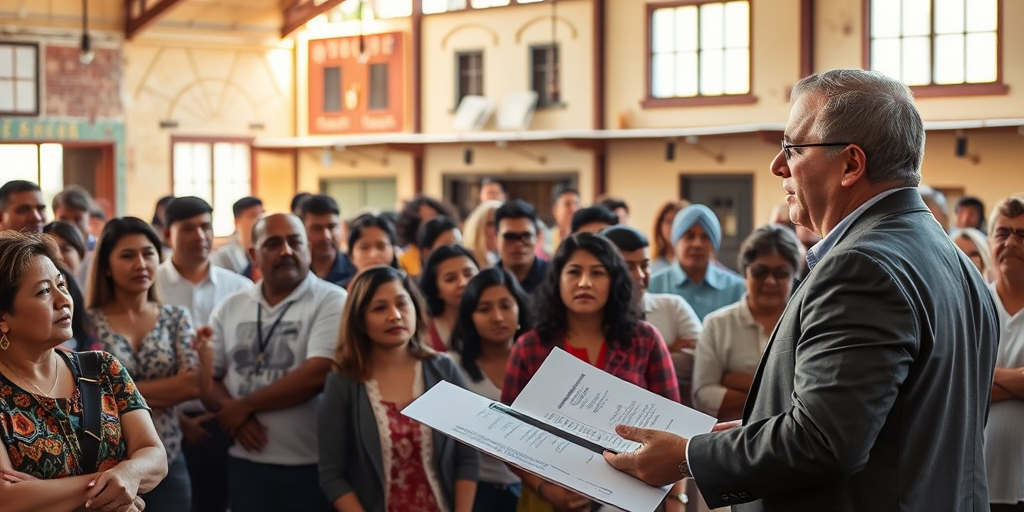COSTEP Powering Progress in Rio South Texas
Amidst growing energy demands and economic ambitions, the Friends of the Council for South Texas Economic Progress (COSTEP) hosted an enlightening “Electricity 101” session, underscoring crucial infrastructure improvements needed for the Rio Grande Valley’s (RGV) power supply. By convening regional leaders, this event highlighted essential insights into the electricity infrastructure that powers South Texas’s economic growth.
Infrastructure and Economic Growth: The RGV Connection
As the Rio Grande Valley contemplates expanding its economic horizons, understanding the intricacies of energy infrastructure becomes imperative. Adam Gonzalez, CEO of COSTEP, passionately articulated this point, stressing the significance of these sessions for the region’s development. “To attract the industries we desire, it’s vital for economic developers to grasp the complexities of our electricity needs,” Gonzalez pointed out.
The studio session drew participation from notable officials, including Dale Fowler, Economic Development & Business Manager at AEP Texas, and Brad Schwarz, Director of Planning at Hunt Utility Services. Together, they provided a comprehensive overview of the current landscape and future possibilities in the energy sector.
AEP Texas: Supporting Large-Scale Projects
Dale Fowler, representing AEP Texas, delivered an enlightening presentation focusing on electricity fundamentals and the infrastructure required for large-scale projects. Fowler revealed that AEP Texas has established 15 agreements for gigawatt-scale projects capable of expanding operations significantly. He emphasized the importance of understanding demand over total consumption, stating, “That’s what we have to build infrastructure for.”
AEP Texas’s forward-thinking approach extends to adopting higher voltage lines, with a significant shift from 138 kV to 345 kV, and ambitious plans involving 765 kV lines. Fowler urged business parks to allocate space for essential infrastructure like substations and transmission easements.
Innovative Transmission Planning for Long-Term Viability
Brad Schwarz, of Hunt Utility Services, echoed Fowler’s insights while shedding light on long-term transmission planning. Highlighting strategic projects, Schwarz elaborated on initiatives such as the Port of Brownsville’s 345 kV loop and the San Antonio-to-Brownsville circuit slated for 2029. These projects are vital to enhancing grid capacity, reliability, and economic growth in South Texas.
The introduction of a 765 kV transmission initiative by ERCOT stands out as a transformative endeavor, with Schwarz calling it “a game-changer.” He assured attendees that this initiative would significantly enhance capacity, carrying the same power as multiple lower voltage lines combined. “Phase 2 of the 765 kV build-out needs to proceed swiftly,” Schwarz asserted, encouraging local developers and legislators to advocate for accelerated development.
Renewable Integration and Market Dynamics in Texas
The session also shed light on the significance of grid modernization, battery storage solutions, and renewable energy integration to meet future demands. Attendees were briefed on the nuances of Texas’s deregulated electricity market, where responsibilities for grid maintenance and power sales are fragmented among different entities.
Reflecting on recent challenges like Winter Storm Uri, the presenters highlighted lessons learned, citing efforts to enhance grid resilience through modernization and diversified energy sources.
The RGV’s Path Forward
For the RGV, the implications of these developments are profound. The region lies at an intersection of unique economic potential and evolving energy demands. By advocating for the timely creation of vital infrastructure, local leaders can pave the way for sustainable growth that benefits Valley residents and South Texas at large.
The session ended with a call to action, urging local stakeholders to align efforts toward future-oriented development strategies. Local developer Andrea Lopez commented, “Understanding these initiatives allows us to plan better for the community’s needs and translate infrastructure readiness into real economic progress.”
Future Implications and Community Engagement
As the RGV continues to position itself as a hub of opportunity, the initiatives discussed at the session point toward a promising future. The integration of advanced infrastructure, coupled with a robust understanding of the region’s electricity needs, offers a path to enhanced economic prosperity.
Community engagement remains a critical component in this trajectory. By involving residents, developers, and policymakers in continuous dialogue, the RGV can effectively navigate challenges while leveraging opportunities in the energy domain.
For those looking to engage further or provide feedback, COSTEP is now taking additional steps to ensure continuous communication with community members. Stakeholders can stay informed through Texas Border Business, which continues to act as a valuable resource for regional commerce and infrastructure updates.
As the Rio Grande Valley marches toward a more sustainable and economically vibrant future, the role of strategic energy planning and infrastructure development cannot be overstated. Through informed action and collaborative efforts, the RGV is set to power progress in South Texas.







